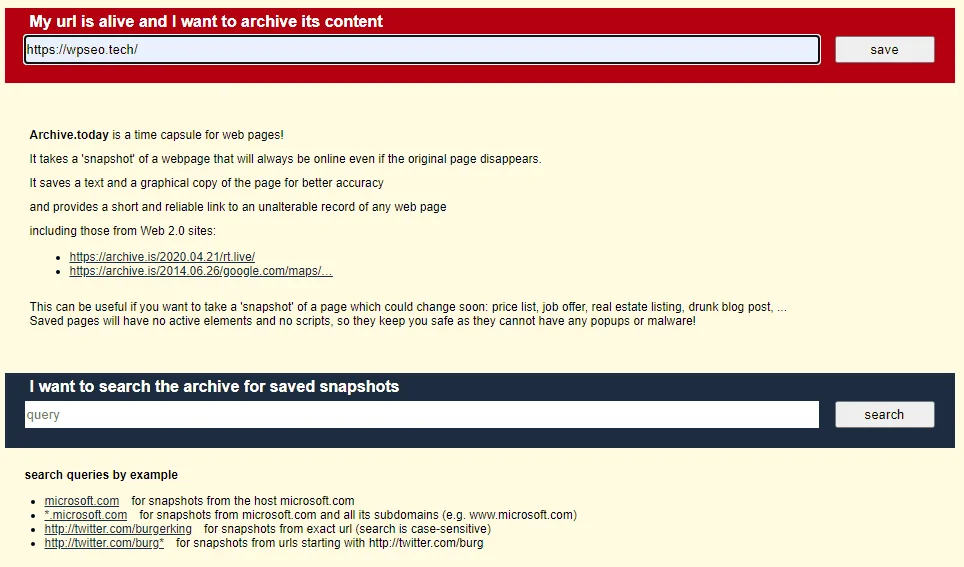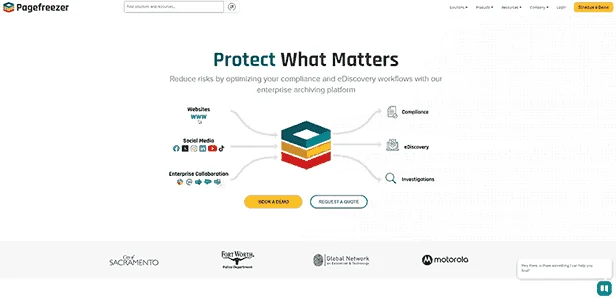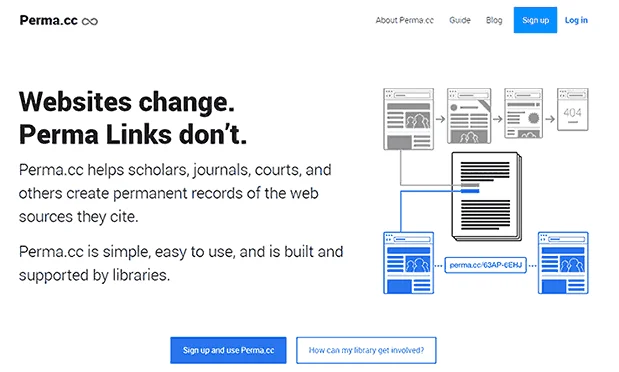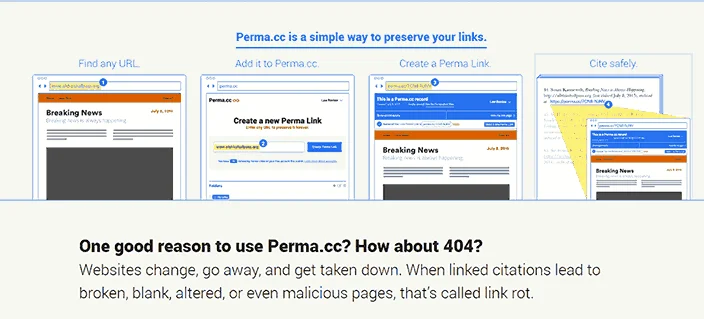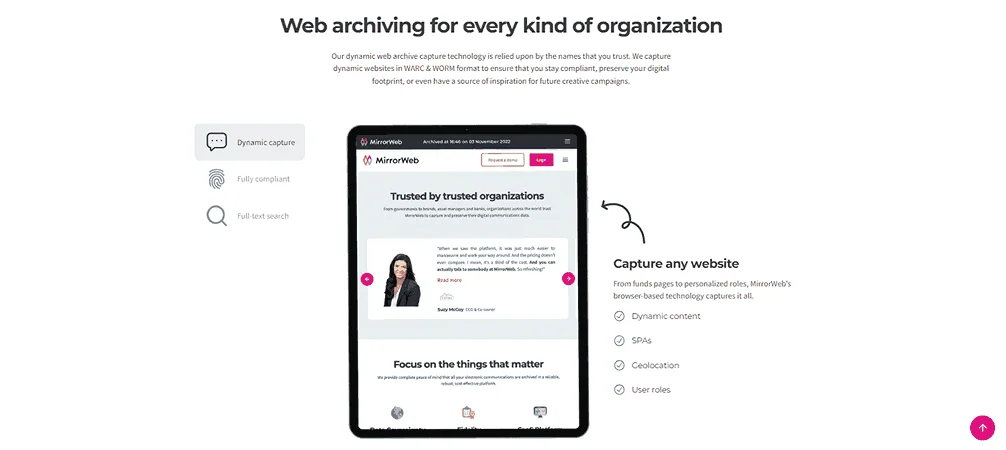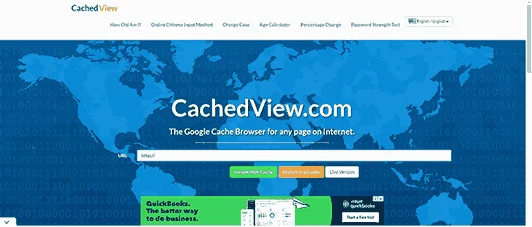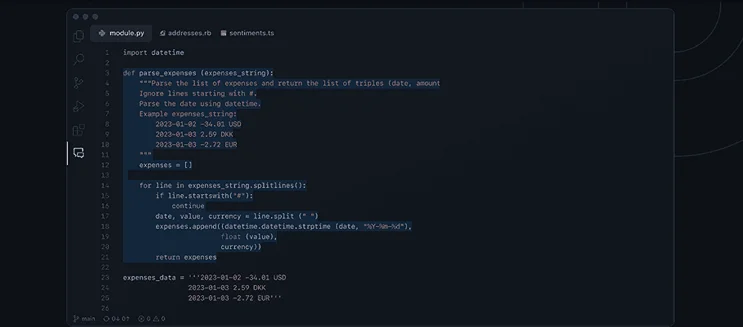Have you ever wanted to revisit a website from the past? Maybe you wanted to see how your favorite website looked like a few years ago or you needed to access some information that is no longer available. In such cases, the Wayback Machine has been a go-to tool for many internet users. However, if you are looking for alternatives to the Wayback Machine, we have got you covered. In this article, we will explore the best 12 alternatives to the Wayback Machine that can help you in your quest for accessing archived web content.
What is the Wayback Machine?
The Wayback Machine is an incredible online tool that allows users to browse through archived versions of websites. It’s like a digital time capsule that preserves the internet’s history for future generations to explore. Created by the Internet Archive, the Wayback Machine has been capturing snapshots of websites since 1996.
Using the Wayback Machine is easy. Simply enter the URL of the website you want to explore, and the Wayback Machine will show you a calendar with available snapshots. You can select a specific date and see how the website looked at that time. It’s a fascinating way to see how websites have evolved in terms of design, content, and functionality.
Why is the Wayback Machine important?
The Wayback Machine serves as a valuable resource for researchers, historians, and anyone interested in studying the evolution of the internet. It allows us to see how websites have changed over time, providing insights into the development of web design, user experience, and the growth of online content.
Additionally, the Wayback Machine can be a helpful tool for website owners and developers. It allows them to access previous versions of their websites, retrieve lost content, or analyze past iterations for improvement. It’s like having a virtual time machine for your website!
Exploring the Wayback Machine
When you dive into the Wayback Machine, you’ll find a treasure trove of information and nostalgia. You can explore popular websites, news articles, blogs, and even defunct websites that are no longer accessible. It’s a fascinating journey through the digital history of the internet.
Imagine being able to see the early versions of social media giants like Facebook or Twitter. You can witness their humble beginnings and compare them to their current state. It’s a reminder of how far we’ve come in the digital age.
But it’s not just about big-name websites. The Wayback Machine also captures smaller, niche websites that might have disappeared or transformed over time. It’s a testament to the diversity and creativity of the online world.
Preserving the Internet’s History
The Wayback Machine plays a crucial role in preserving the internet’s history. With the ever-changing nature of the web, websites can come and go in the blink of an eye. Without the Wayback Machine, valuable information and memories could be lost forever.
By archiving websites, the Wayback Machine ensures that future generations can learn from and appreciate the digital heritage of our time. It’s an invaluable resource for researchers, educators, and anyone with a curious mind.
The Wayback Machine is a remarkable tool that allows us to explore the internet’s past. It’s a time machine that lets us revisit websites as they were years ago, providing insights into the evolution of the online world. Whether you’re a historian, a researcher, or simply curious about the internet’s history, the Wayback Machine is a fascinating resource that will transport you to the digital past.
Now, let’s look at some best alternatives to the Wayback Machine.
1. Archive.today
Archive.today is a popular alternative to the Wayback Machine. It allows you to take snapshots of web pages and store them for future reference. One of the advantages of Archive.today is that it captures the entire web page, including all images and external resources. This means that you can view the archived page exactly as it appeared when it was captured. Archive.today also provides a simple and user-friendly interface, making it easy to search and access archived pages.
Additionally, Archive.today allows you to create collections of archived pages, making it convenient for organizing and sharing your archived content.
Archive.today, formerly known as archive.is
2. Memento Time Travel
Memento Time Travel is a powerful tool that allows users to access archived versions of websites. It works by leveraging the Memento protocol, which enables users to travel back in time and view previous versions of web pages. With Memento Time Travel, you can easily explore how websites looked in the past and track changes over time. Whether you’re a researcher, historian, or simply curious about the evolution of a particular website, Memento Time Travel provides a user-friendly interface and a seamless browsing experience.
3. WebCite
Another alternative to the Wayback Machine is WebCite. It offers a straightforward way to archive and preserve web pages. WebCite allows users to create a citation for a specific web page, capturing its content at a particular point in time. This feature is particularly useful for researchers and academics who need to cite web pages in their work. By creating a WebCite link, you can ensure that the content you reference remains accessible and verifiable, even if the original website goes offline or undergoes significant changes.
4. Internet Archive
Finally, we have the Internet Archive, which is perhaps the most well-known alternative to the Wayback Machine. The Internet Archive is a non-profit digital library that provides free access to a vast collection of web pages, images, videos, and other digital content. It has been archiving the web since 1996 and is a valuable resource for researchers, historians, and anyone interested in exploring the history of the internet.
With its Wayback Machine feature, the Internet Archive allows users to browse archived versions of websites and see how they have evolved over time.
5. Visualping
Visualping is a web monitoring tool that not only allows you to track changes on webpages but also offers a web archiving feature. With Visualping, you can easily capture and store snapshots of webpages, allowing you to go back in time and view the content as it appeared on a specific date. This can be useful for various purposes, such as legal evidence, historical research, or simply for personal reference.
One of the key advantages of Visualping is its user-friendly interface. You can set up monitoring and archiving tasks with just a few clicks, and the tool will send you notifications whenever a change is detected on the webpage you are tracking. Visualping also offers a browser extension, making it even more convenient to use.
6. Pagefreezer
Pagefreezer is another powerful web archiving tool that allows you to capture and preserve webpages as they appeared at a specific point in time. It offers a comprehensive archiving solution for businesses, government organizations, and legal professionals who need to capture and store web content for compliance, legal, or regulatory purposes.
Pagefreezer provides advanced features such as full-text search, annotation, and export options, making it a valuable tool for researchers and archivists. It also offers automatic archiving, ensuring that your web content is regularly captured without any manual intervention.
7. Perma.cc
Perma.cc is a web archiving service specifically designed for academic institutions and legal professionals. It allows you to create permanent links to webpages, ensuring that the content remains accessible even if the original webpage is no longer available. Perma.cc is widely used by libraries, courts, and other organizations that need to preserve web content for future reference.
One of the unique features of Perma.cc is its collaboration capabilities. Multiple users can contribute to a shared archive, making it easier to build comprehensive collections of web content. Perma.cc also provides tools for citation and attribution, ensuring that archived webpages can be properly referenced in academic papers and legal documents.
8. Stillio
Stillio is a web archiving tool that focuses on capturing screenshots of webpages. It offers an automated solution for capturing and storing visual representations of web content, allowing you to easily track changes and preserve the visual appearance of webpages over time.
Stillio offers various customization options, such as capturing full-page screenshots or specific sections of a webpage. It also provides scheduling options, so you can set up regular captures of webpages without any manual intervention. Stillio is particularly useful for monitoring visual changes, such as website design updates or user interface modifications.
9. MirrorWeb
MirrorWeb is a web archiving platform that enables organizations to capture and preserve their web content. It offers a comprehensive solution for archiving websites, social media, and other online content. With MirrorWeb, you can easily access and retrieve archived versions of web pages, ensuring that valuable information is never lost.
One of the key features of MirrorWeb is its ability to capture dynamic web content, including JavaScript-based interactions and AJAX requests. This ensures that the archived version of a web page accurately reflects its original functionality.
MirrorWeb also provides advanced search capabilities, allowing users to quickly find specific content within the archive.
10. CachedView
CachedView is another alternative to the Wayback Machine that offers web archiving services. It allows users to view cached versions of web pages from various search engines, including Google, Bing, and Yahoo. CachedView provides a simple and user-friendly interface, making it easy to access archived versions of web pages.
In addition to viewing cached versions, CachedView also offers a feature called “Site History,” which provides a timeline of archived snapshots for a specific website. This can be useful for tracking changes made to a website over time or for retrieving content that has been removed or altered.
11. ChangeTower
ChangeTower is a web monitoring tool that offers a unique approach to web archiving. Instead of capturing entire web pages, ChangeTower focuses on tracking changes made to specific sections of a website. This can be particularly useful for monitoring news articles, blog posts, or any other content that frequently gets updated.
ChangeTower provides real-time alerts whenever a monitored section of a website changes. It also offers a visual comparison feature, allowing users to see the differences between different versions of a web page. While ChangeTower may not provide a complete web archiving solution like the Wayback Machine, it offers a specialized tool for tracking and monitoring specific content.
12. GitHub
While not specifically designed as a web archiving tool, GitHub can be a useful alternative for preserving web content. GitHub is a popular platform for hosting and managing software projects, but it can also be used to store and share web pages or entire websites.
By creating a repository on GitHub, you can upload HTML, CSS, and other files that make up a web page or website. This allows you to preserve the content and easily share it with others. GitHub also offers version control, which allows you to track changes made to the files over time.
One advantage of using GitHub for web archiving is that it leverages the power of the open-source community. Other users can contribute to the preservation and improvement of the archived content, ensuring its longevity.
Whether you’re looking to explore the history of the internet, cite web pages for academic purposes, or simply satisfy your curiosity, these Wayback Machine alternatives offer a range of options to suit your needs. From Memento Time Travel’s time-traveling capabilities to WebCite’s citation-focused approach, and the country-specific web archives and extensive collection of the Internet Archive, you’re sure to find a tool that meets your requirements. So the next time you come across a website that is no longer accessible, don’t fret. Just turn to one of these alternatives and embark on a journey through the digital past.


